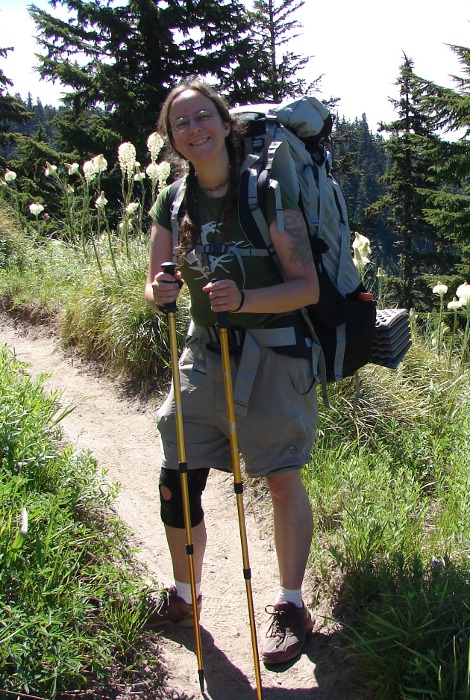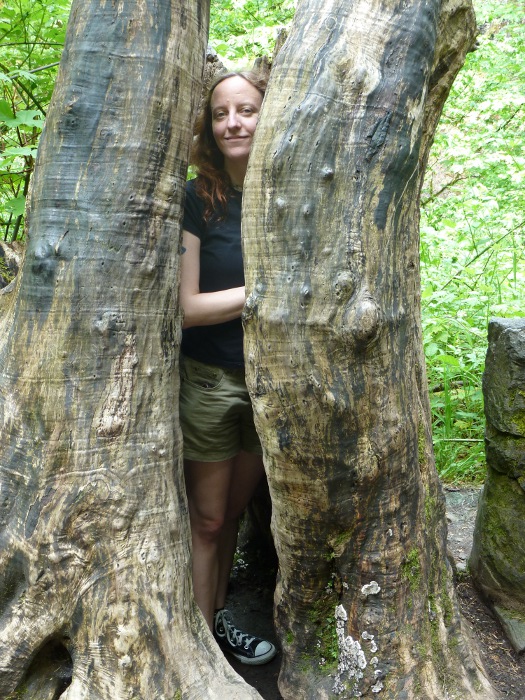
Over the years I’ve learned that most of the time when someone in the pagan/New Age/etc. world says something about “honoring the sacred body” or something similar it’s a euphemism for sex. I consider myself to be a sex-positive person, but I also believe it’s important to be able to recognize the sacredness of one’s physical form even at times when you aren’t getting it on with someone else (or someones, or yourself…) In fact, the hyper-focus on sex and sexuality as the only connection between body and spirituality often leads to abuses and toxicity.
Let me focus on one particular exploiter of this narrow view of sacred physical: the Sensitive New-Age Guy, or SNAG. Some variations of this creature are relatively benign and passive–nothing wrong with a pacifist! However, I’m sure many of you have run into the more toxic sort, the one who’s using the nice and gentle image of pagan/New Age/etc. communities to get laid. Some of them do end up in true abuser territory, but a lot more that I’ve run into are more just fairly clueless misogynists with no ill intentions (some of them even buy into their own hype!)
This is the guy who wants you to know that he’s better than all those other guys, but instead of peacocking around like some pickup bro, he uses the language of “I’m focused on a woman’s pleasure”. He may have books upon books about everything from erotic massage to the female orgasm. SNAGS particularly like exploiting neo-Tantric perspectives (in the mouth of a SNAG, “Tantra” is a HUGE catch-phrase for “I want to get laid using spirituality as a veneer”). But when you get him into bed, he’s more focused on looking good and getting praise from you than actually paying attention to whether you enjoyed yourself or not. And once you get past the bedroom, you may find that as a person he is controlling and unpleasant, especially if you don’t respond to his pleas for ego-strokes quickly enough. (You can read more about this flavor of gent here.)
The toxic breed of SNAG is just one example of where body and spirit end up melding in unhealthy ways that only provide a surface look at both, though he’s a pernicious one. But he’s just symptomatic of the broken relationships so many of us have with our bodies. The SNAG is able to find victims because there are so many people (not just women) who are so starved for positive attention to their bodies that they swallow his bait without a second thought.
And this is why I feel strongly that our approach to our bodies as spiritual things needs to include but also move outward from sex and sexuality. I choose that word deliberately: movement is one of the most important manifestations of the sacred physical as far as I’m concerned. A body is made for movement–in strict evolutionary terms, the body is the vehicle for DNA to replicate, both within itself (mitosis) and for purposes of combining with another (meiosis). More broadly, a body is always in motion of some sort; even when you are concentrating on keeping yourself completely still during meditation, your heart still beats, blood flows, cells divide, chemicals move throughout the entire system. Upon death, your body continues to move; the molecules fall away more quickly as decay sets in, and everything that was once your physical form dissipates into the world to be recreated as other living beings.
But that’s getting a bit ahead of things, isn’t it? I want to look more at sacred movement outside of the bedroom. Take a moment to look back at the vignettes from my first post in this series. Specifically, read the first one where I’m carefully making my way over a precarious landslide on a narrow mountain trail. It is a pared-down conversation between me and my body, where every muscle fiber and inner sense of balance counts. It is literally breathtaking, and life-saving. That moment woke me up to the sacred processes of my body in ways no sexual act ever did. And it was because I was keenly aware of my movement.
More recently as I’ve returned to the gym for treadmills and weightlifting, my body’s movement has become even more paramount. While I do pay attention to things like weight and shape–and, yes, potential sexiness–I’m more interested in the ways my body moves. How good is my form when I pick up a barbell for arm curls or squats? What does my body look like when I pull against a stationary object to stretch my back and curve myself to increase the effects? What happens if I increase my protein intake for a couple of weeks? How am I affected if I indulge in sweets a bit more? Where are these nutrients moving to, and when I burn them where are they leaving from? These are everyday occurrences, and yet I approach them with a great reverence and awareness.
I see movement as a sacrament now. It is how I act upon the world, and upon myself. Whether it’s the rush of neurotransmitters in my brain and body, or the stretch and contraction of muscles, or the flutter of oxygen molecules into pockets in my lungs, movement is what states “I am here, and I am a force to be reckoned with”. And when I am dead, the molecules of my body will continue to move throughout the universe, tying me to the future as well as the past. What better immortality is there than that?
And once I recognized the power of my body’s movement, it gave me a sense of agency in more immediate ways. I am more aware of my ability to make decisions, even when the possible outcomes are limited. I have become more conscious and deliberate in my choices, drawing on that urgency on the side of the mountain and infusing my entire life with it. I am a more complete being, body, mind and spirit.
See what we miss when we only explore the surface? See what occurs when we limit our sense of sacred physical to sex and sexuality alone? There’s so much context missing from that experience. And movement is just one piece of the puzzle, along with sensation and communication, stress (both positive and negative) and feedback loops, the place of a person’s body in the greater ecosystem and the ecosystem of bodily flora and bacteria that outnumber our very cells.
We are made of starstuff, yes, and natural processes that when we consider them seem almost miraculous. The sacred physical is what invites us to stop taking them for granted and appreciate them in all their simplicity and grandeur. It is the antidote to the SNAG and the puritan, two sides of the same limited coin. And it is a way to appreciate our bodies not as prisons for beings fallen to earth from higher realms, but as the sacred vehicles through which we experience completely unique lifetimes, never to be repeated.
Let us move, then, into the sacred physical more fully. In doing so we ease yearning for something unattainable, and instead make the most of what we know we have for sure–this holy moment, right here, right now.


